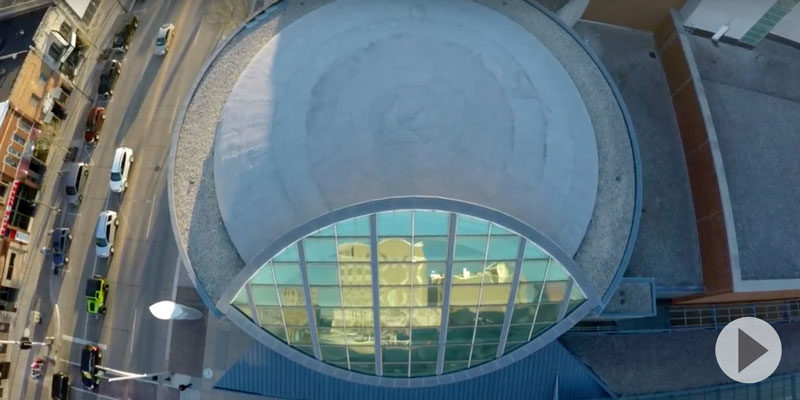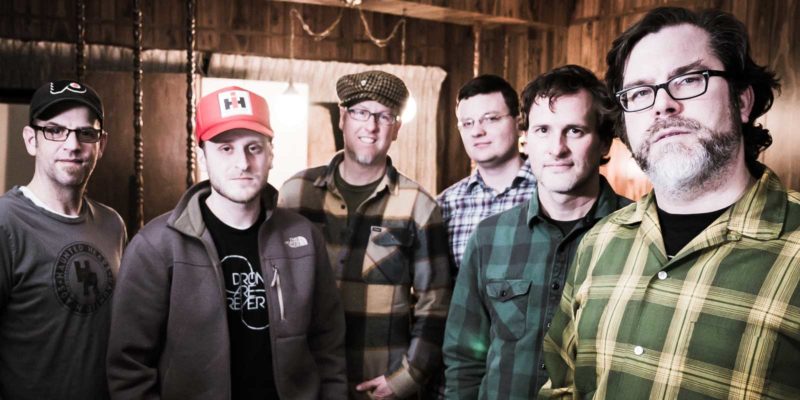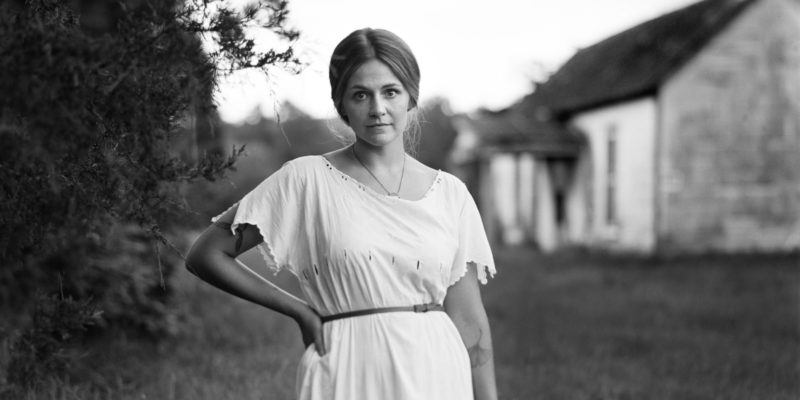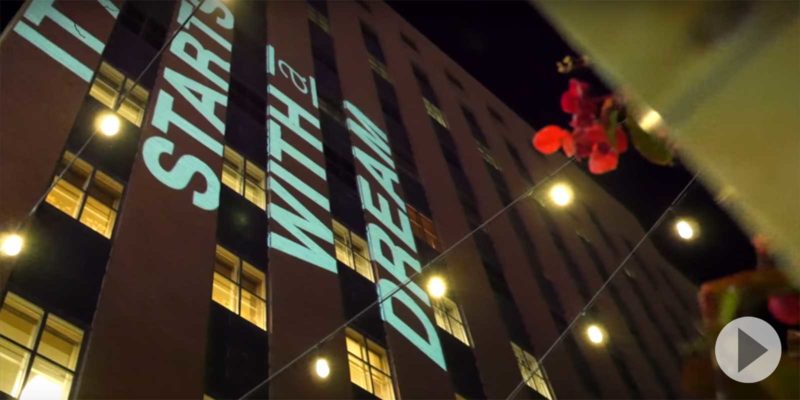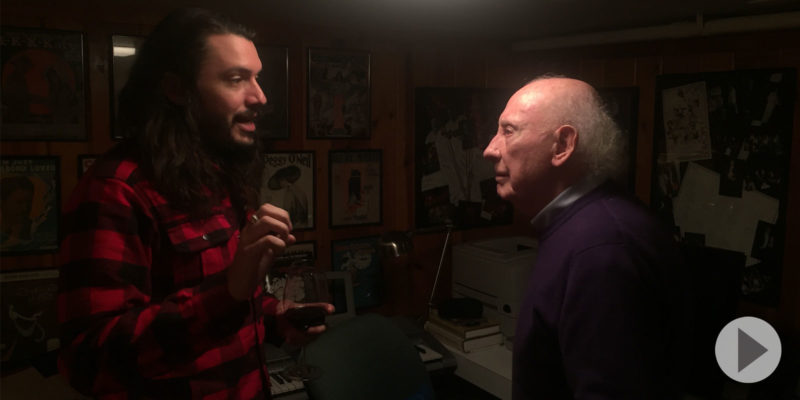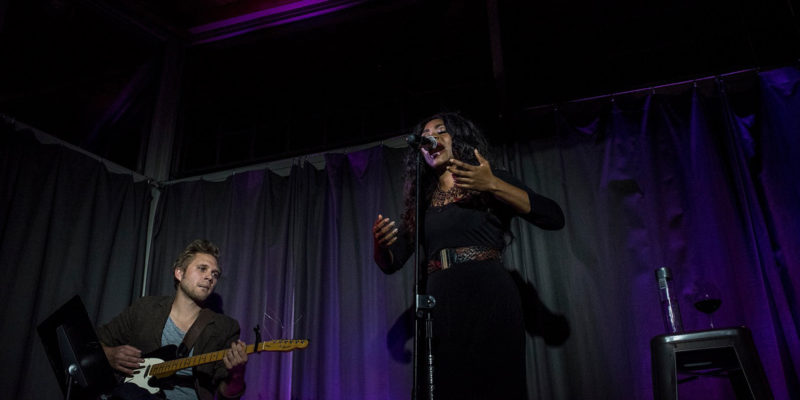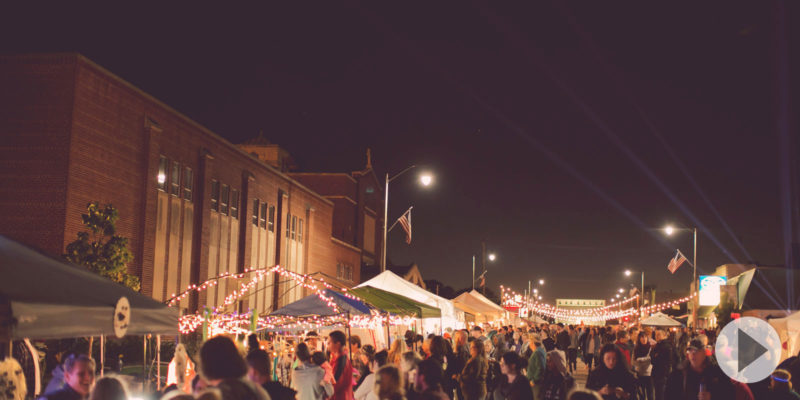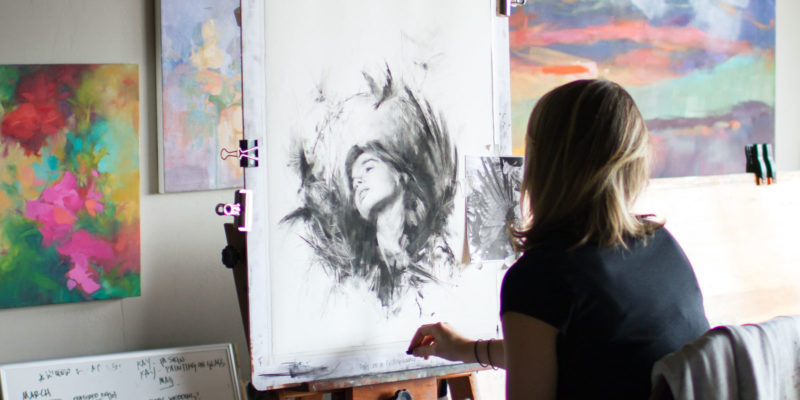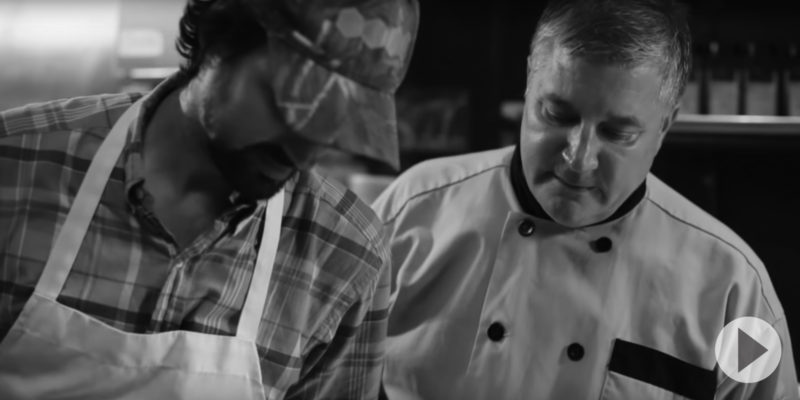“Home, home on the range,
Where the deer and the antelope play,
Where seldom is heard a discouraging word,
And the sky is not cloudy all day.
How often at night, when the heavens were bright,
With the light of the twinkling stars
Have I stood here amazed, and asked as I gazed,
If their glory exceeds that of ours.”
Strangely, perhaps- my sentiment of the North American Plains falls much in line with Dr. Brewster M. Higley’s own depiction of the geographic region in his dusty Western folk song, “Home On The Range”; written 134 years before my own first visit to the wide-open cloudless skies of Oklahoma & its nine siblings of the Great Plains. Oklahoma’s modern-day mega-highways couldn’t change that feeling. Neither could their offspring of corporate supermarket stores, deep-fried fast food, and warring truck stop fortresses.
I recall one of the first times I ever actually stepped foot on Oklahoma state soil. The year was 2011; concluding a several week run of the Western United States with my band Tenement at a sweaty house show in the bowels of Oklahoma City. We pulled up curb-side at the aforementioned time of night (“When the heavens were bright”) to a small ranch-style home in our short-lived 1987 Dodge Ram 250 full-size van. Fresh off of a full day of cascading West-Texas in our deathtrap on wheels, I stumbled out of the cabin of the vehicle and dove backwards onto the crunchy front lawn as one would do onto the comfort of their own bed after spending each night on strangers’ floors for a month. And here’s where Dr. Higley comes into play again; as I study the star-speckled Oklahoma heavens in flat-backed deep thought:
“With the light of the twinkling stars; have I (lay) there amazed, and asked as I gazed; if their glory exceeds that of-
“I wouldn’t lay there if I were you. You might get bit by Chiggers.”
“Huh? Chiggers?”
The wonder of a moment of dreaming- sent careening back to wherever it came from- by a friendly and mindful local punk; educating the ignorant tourist while destroying the situational romance.
Yes, Chiggers. Biting mites that reside in Southern vegetation like grass and Spanish moss; feeding on the skin of mammals and inflicting swelling and itching. A strange dark aspect of such an intensely beautiful place. It felt slightly Lynch-ian; almost as if I had uncovered a disembodied ear in an idyllic countryside as in the 1986 neo-noir film Blue Velvet. It’s this contrast that brings me to the kindred-feeling between the Great Plains region of Oklahoma City and the Midwestern Rust-Belt region of Milwaukee and Appleton, Wisconsin. There’s an allure to the quaint and archaic way of life in these localities that might allow one to be oblivious of their dark sides and their role as artistic anomalies.
It’s certainly a struggle to explain why art from the heartland and the plains states can be so honest and gritty; why it finds itself serving as a reflection of the human condition; why it focuses on the perverse nature of life and why it rarely seems to naturally fall in with glamour and glitz. It can be both brutally direct and grotesquely eccentric without relying on gimmicks or censoring itself in the interest of capitalism. I think of punk bands like Milwaukee’s Die Kreuzen- who in 1984 used noise, dissonance, and demonic-like screaming to convey a distinct feeling of urban hopelessness in songs like “Pain”, “Sick People”, and “Dirt and Decay”; Minneapolis’ The Replacements- who exploited particularly haphazard recording methods and rugged performances on their first few albums in a way that harkens back to the reckless abandon of The Stooges from Ann Arbor, Michigan and the earnestness of Chicago blues screamers like Howlin’ Wolf. I think of the degenerate feeling of “Wonderful Subdivision”, as performed by St. Louis’s infamous mutant noise punks Drunks With Guns. But I also think of defining purveyors of tavern-dwelling hardcore honky-tonk country music such as Jean Shepard, Dallas Frazier, Bonnie Owens, Tommy Collins, and Wanda Jackson- all hailing from Oklahoma. I think of the writhing, painful sounding “1-2-3-4!” at the onset of Debris’ “One Way Spit”; a Norman, Oklahoma proto-punk group with strange electronic & no wave tendencies. I think of Curtis Mayfield, who in Chicago in 1970 proclaimed, “If There’s A Hell Below, We’re All Gonna Go!”. I think of Mannford, Oklahoma’s outsider Lee Hazlewood; whose debut album “Trouble Is A Lonesome Town” paints a stark vignette of a dead-end town and the prospect of one day escaping it. I think of some of the true freaks of jazz music like Ohio’s Roland Kirk, Chicago’s Lennie Tristano, and Oklahoma’s Don Cherry. I think of Illinois folk-singer John Prine and his icepick of a lyric, “There’s a hole in daddy’s arm, where all the money goes- Jesus Christ died for nothin’ I suppose” from his ballad “Sam Stone”. I think of all these things and it keeps bringing me back to the very place where it all comes from: the juke-joint; the honky-tonk; the blues clubs and dive-bars; the basements, warehouses, garages, and storefronts that incubate the very motivations to create art like this. It gets me thinking of Oklahoma City now. In particular, a sub-culture built around these kinds of locales, and a specific scene of outsider music which dubs the town “Freak City”, along with one Oklahomian singer-songwriter from this specific sub-culture and his relationship with the elusive Appleton, Wisconsin musical enterprise known as “Crutch Of Memory”.
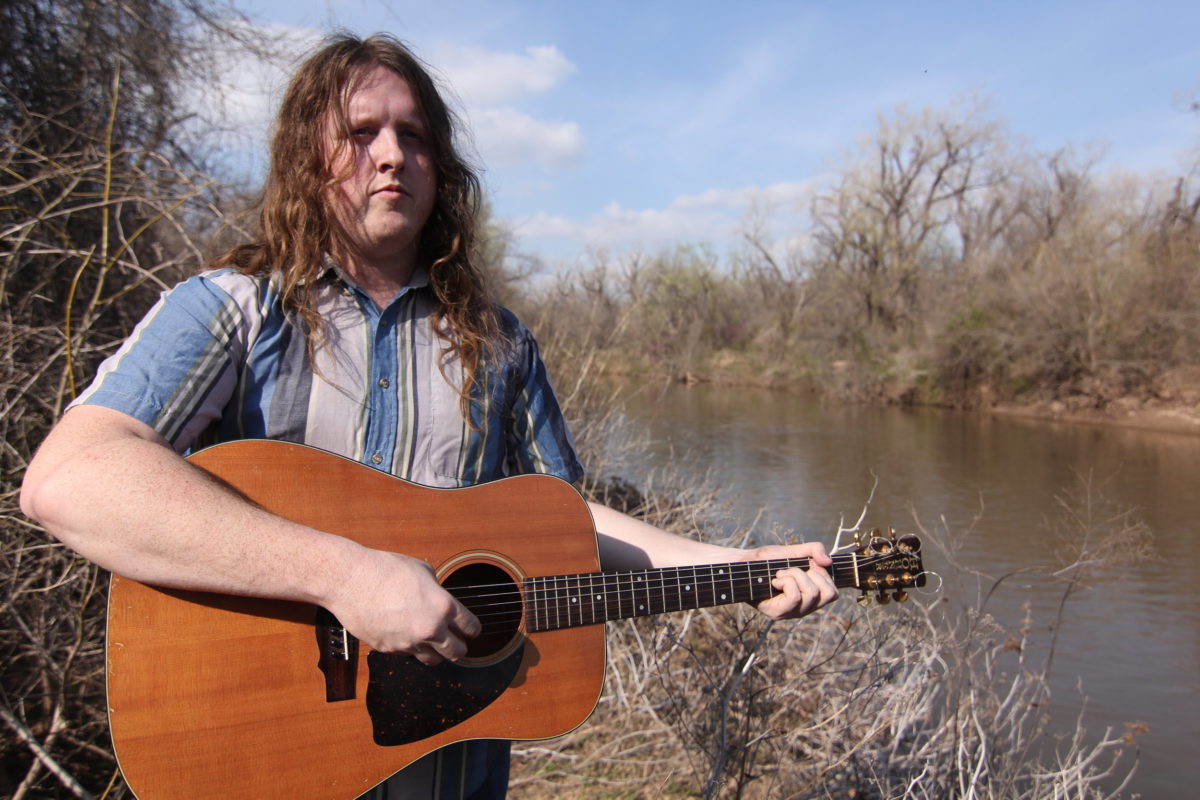
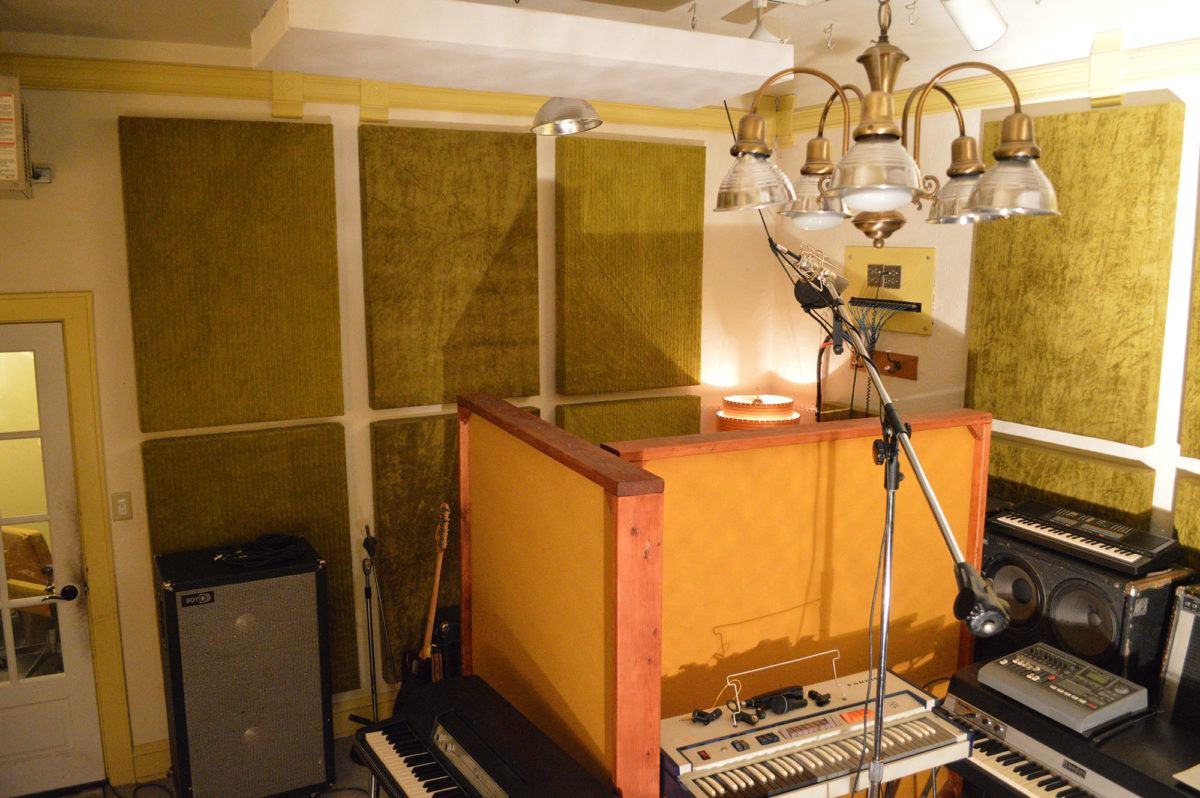
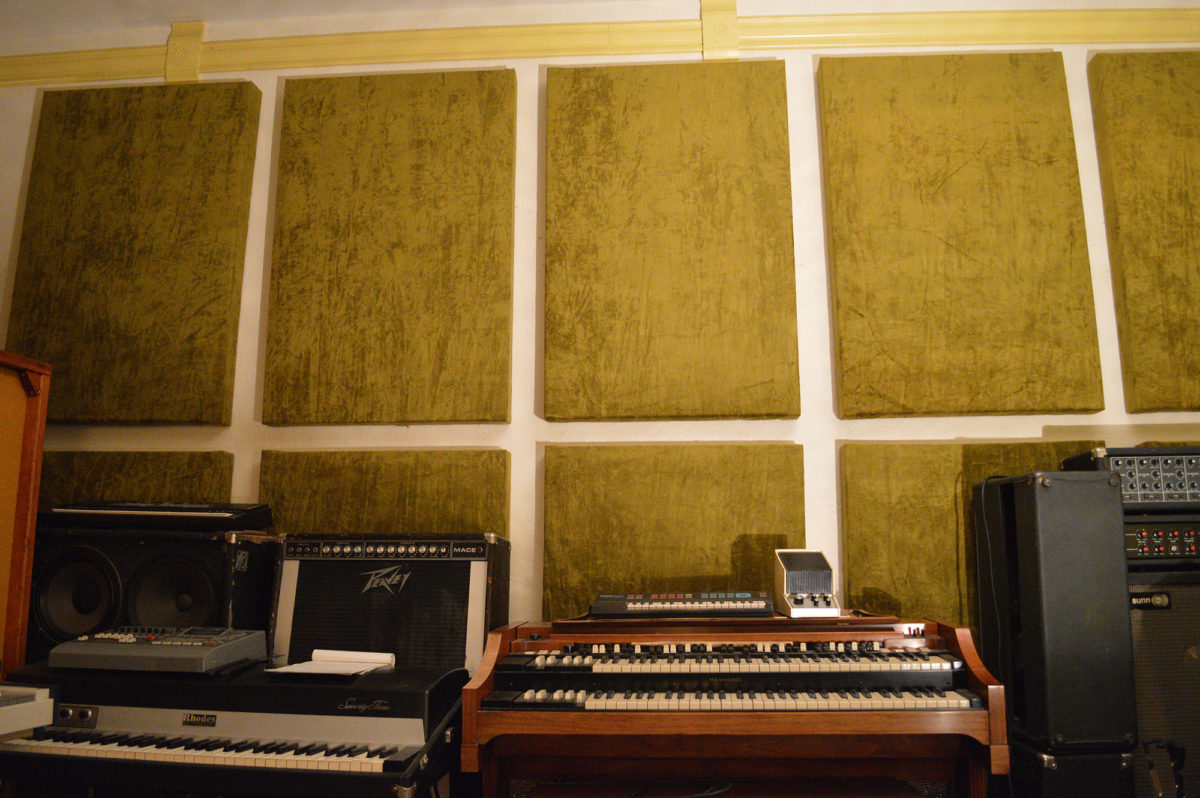
Nine hundred and fifty-five miles directly Northeast of Oklahoma City resides a large working-class brick home built in 1933. It sits squeezed into an industrial/residential corner of Appleton, Wisconsin known for paper production and metal fabrication. Hardly an ideal environment for a recording studio- though Crutch Of Memory exists in the middle of it all no less. Within its walls, you’d be hard pressed to find evidence that it had once served as an adult novelty store, an oddities shop, and most recently- a vintage barn lights reseller. The only clues of the latter institution are found when first walking in through the front door and looking straight up; seventy-two large metal hooks anchored into the ceiling beams overhead- once functioning as hangers for heavy steel pendant lamps and now of use to the studio occasionally to dangle microphones to pick up the ambience of the room. On the southern-most wall, a defunct furnace vent has been repurposed as a tunnel to route twenty-four channels of microphone inputs down to the control room in the lower level. The perimeter of the room is dotted with vintage and modern instruments: Hammond tone-wheel organs, electric pianos, piles of glittery drums- and the walls are adorned with immense acoustic baffling in a spectrum of colors from perhaps the late era of art deco: pea green, crimson, air force blue, and apricot. When in session, the room (affectionately known as “The Shop”) fills to capacity easily; accomodating seven to eight musicians and making for intimate and visceral performances. For all intents and purposes, it’s a room not unlike iconic studios of yore such as Sun Records or the original Motown Hitsville U.S.A. facility in Detroit, Michigan: an economical amount of space with a modest equipment inventory that relies heavily on the talent of the musicians and producers themselves to make the magic happen. On the floor below resides the control center of the studio- a 24 channel British recording console, a 70’s plate reverb system, and an array of analog and digital tools to translate and manipulate human performance into electrical signals into a fully-realized work of art. But none of that would even be possible without the seed of thought, the act of expression, and the room above in which it all coalesces.This very room is where Tim Buchanan pulled up a stray piano bench and tracked the near-entirety of his debut full length album Tim Buchanan With Dusk… And On His Own in one take. Over the course of the past year or two, it’s also acted as headquarters for Crutch Of Memory Enterprises- a Fox River Valley record label in its infancy- founded by three individuals with their own unmistakable musical trademarks: Milwaukee resident Andy Harris; a disciple of library and instrumental music who came to recognition as guitarist in The Goodnight Loving and Jaill- the latter of which released two albums on the Seattle Sub Pop label in 2010 and 2012. He now records and self-releases music under the moniker HPA, and lends a playful, angular, and almost cinematic quality to every melody he touches. Julia Blair; who studied vocal performance at Appleton’s Lawrence University and has used that knowledge and skill to great effect as both a soloist and accompanist. She specializes in string arrangement; drawing on minimalist composers such as Steve Reich and Arvo Part- among others- for inspiration, and approaching composition herself as a folk music aficionado and avid fan of Nina Simone. She’s currently recording her first solo album; planned as Crutch Of Memory’s second official release. Lastly, myself- Amos Pitsch- You might know me from the band Tenement; a rock group generally known as contrarians and usually associated with the American underground DIY punk scene. The New York Times once said I have a “hyper-sophisticated interest in the mechanics of music in general.” I’m only proud of that because the guy who wrote it also wrote a definitive biography of John Coltrane. On pointing that out, I’d like to convey that I have a deep interest in the composition of great and effective pop music but I also like to pull the conventions away from their comfort zone when I can. And that may be the greatest contribution I can make to the world of music. The three of us come together on that last detail; striving to write music that tugs at the heart, but challenges perception. We’ve created this label as a means to write, arrange, and produce music for artists we love and to put our stamp on the final product again in the form of in-house visual design. We utilize our own in-house musicians for every release- including ourselves- and often incorporate members of Tim Buchanan’s band of close associates, Dusk.
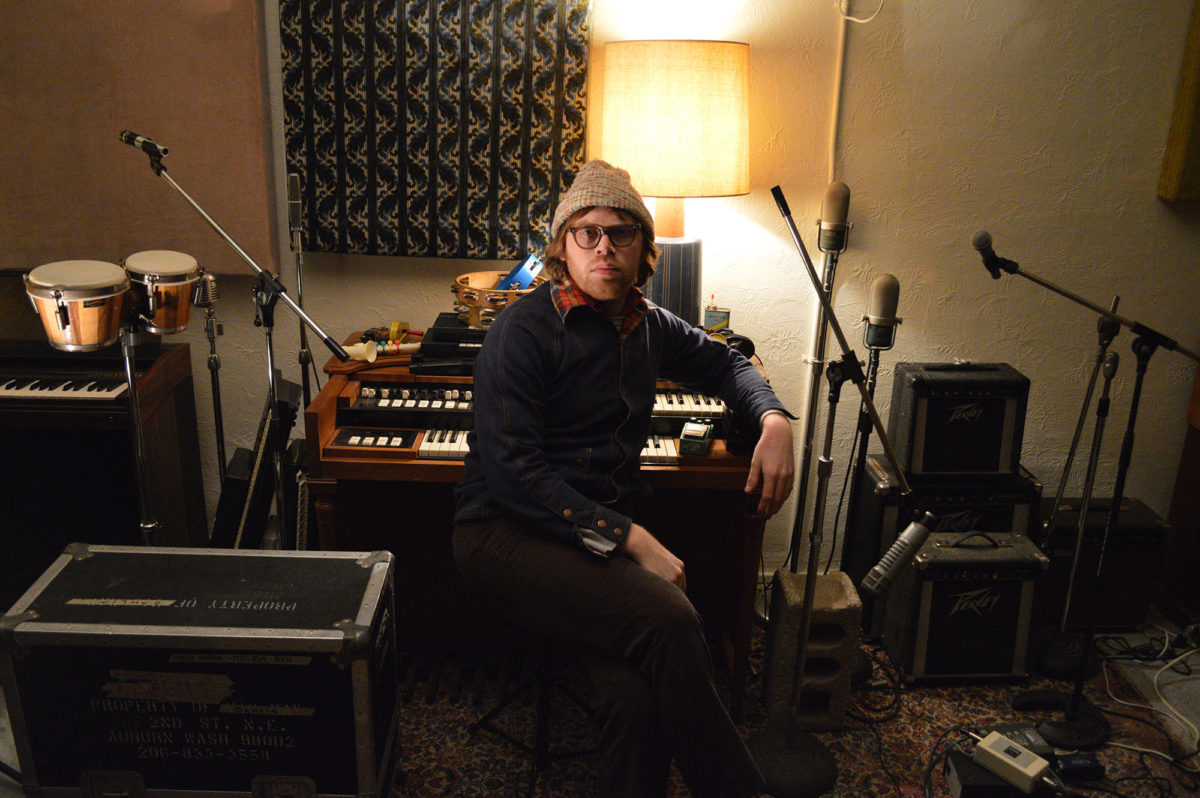
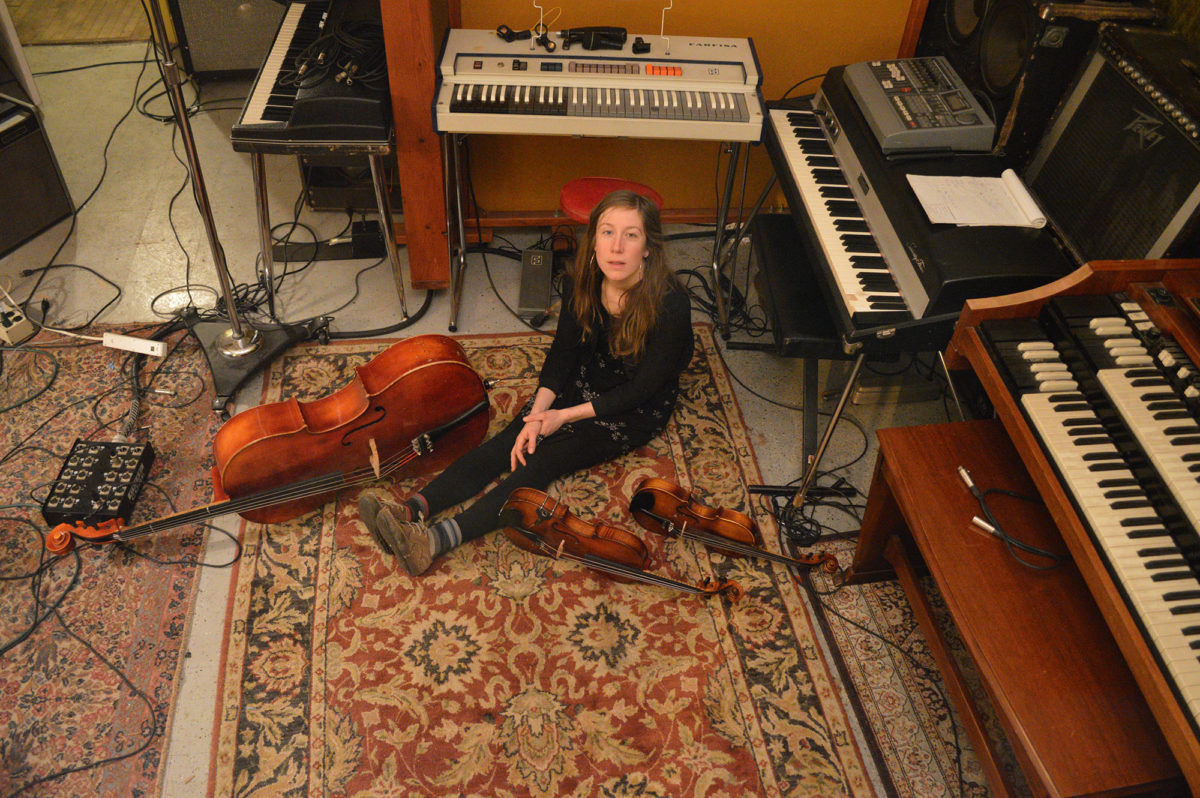
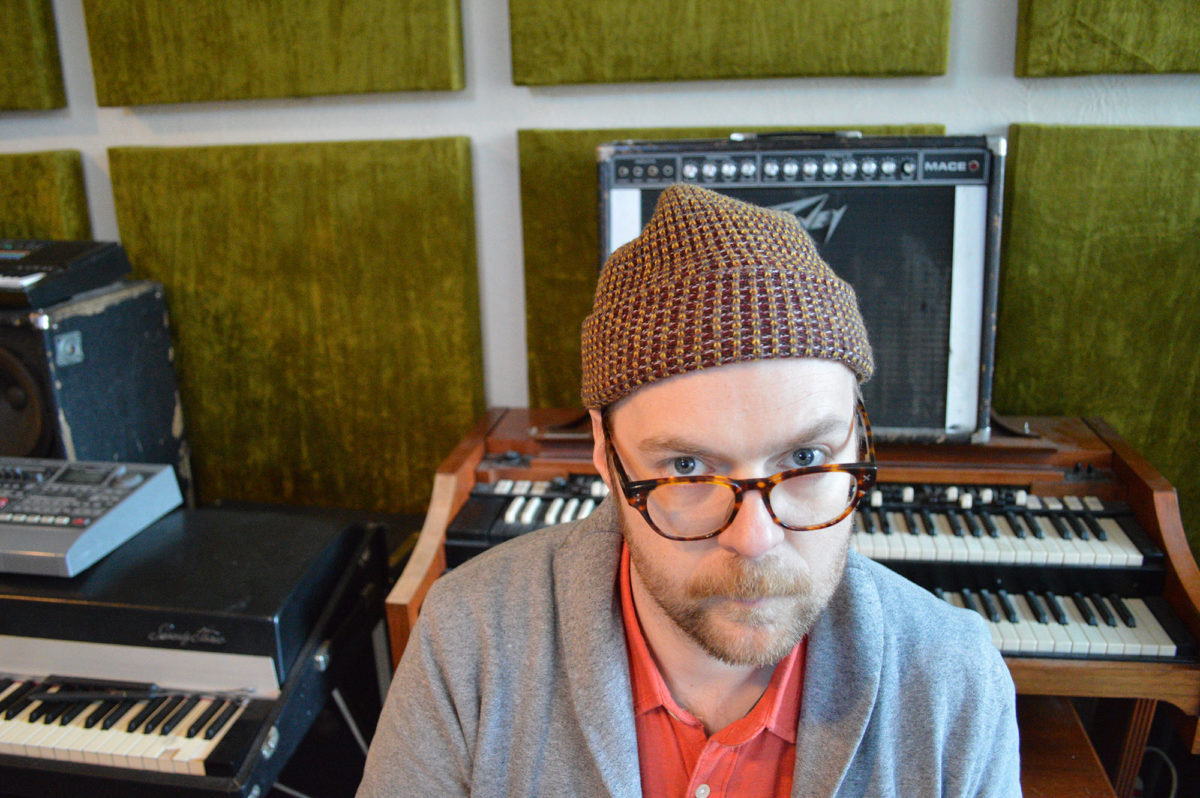
Dusk formed in 2014 by myself, Colin Wilde, Julia Blair, Ryley Crowe, and Tyler Ditter; employing notorious Appleton punk house The BFG as a home-base before eventually obtaining the brick home which would come to be known as Crutch Of Memory. We’ve built a small empire around our art- isolating ourselves from the quackery of show business in pursuit of total creative freedom and an audience that will embrace our ideas and eccentricities. These ideas find their roots in the vast canon of American music; from the jazz standard songbook to the shuffle and stomp of honky tonk country. This eclectic approach to musical thought lends a certain quality to Tim Buchanan With Dusk… And On His Own; of what may be interpreted as nostalgic but certainly not dated. Of the nine songs which make up the album, eight of them conjur a sonic image of a balladeer seated on wooden bench; shaping the atmosphere of the room into a chamber of lullabies. Tim finger-picks percussively with the meat of his fingers; thumbing the bass-notes and plucking the chordal structures with his pointer, middle, ring, and pinky. The result is a timbre akin to beating a drum with a sirloin steak. He compliments this style with whispery crooning and brief interjections of howling in and out of tune; of which can sound like a desperate yodel or a tearful, canorous plea for a willing ear. His vocal approach can bring to mind a young Folkways-era Michael Hurley: sincere and impassioned; intonation be damned.The singular track on Tim Buchanan With Dusk… And On His Own with full-band arrangement emphasizes Dusk almost as the featured artist; burying Tim’s boldness with a lush, pillowy Younger-Than-Yesterday Byrdsian vocal choir. Grinnin’ comes out of the gate swingin’ as a sharp snare drum crack signals the twang and fuzz of an electric lead guitar. The whole band sings together of a long road of loneliness & rejection- and the light at the tunnel. Almost as if channeling the sentiment of Lee Hazlewood’s [Trouble…] or the great lineage of honky tonk minstrels. And so it all circles back. We sing of these themes- desolation, heartache, seclusion- so naturally together because we can reach into these shadows that are unseen by the vacationist’s eye and convey the very essence of the heartland experience. Furthermore, through the Crutch Of Memory studio and label, we’ve come to know how to translate that feeling to recorded sound without seeming disingenuous; without putting off an energy that says “we seek to please”. As the only thing we really seek to do is to articulate our vision honestly. It’s a language you come to speak once you know that you’ve got no one to save you but yourself.
– Amos Pitsch, August 2019
Check out the world-premiere of director Finn Bjornerud’s new music video for “Grinnin”, off of the album Tim Buchanan With Dusk… And On His Own; out now on vinyl and digital formats via Crutch Of Memory Enterprises.
* * *
Relevant links & Social Media
Buy The Album
https://crutchofmemory.bigcartel.com/
Crutch of Memory
Website: http://www.crutchofmemory.com
Facebook: https://www.facebook.com/crutchofmemory/
Instagram: @crutchofmemory
Twitter: @crutchofmemory
Discogs: https://www.discogs.com/seller/Crutch_Of_Memory/profile
Bandcamp: https://crutchofmemory.bandcamp.com/
Tim Buchanan
Website: http://www.timjbuchanan.com
Facebook: https://www.facebook.com/timbuchananmusic/
Instagram: @t.buchanan_
Dusk
Facebook: http://www.facebook.com/duhhsk
Bandcamp: http://countrydusk.bandcamp.com
Instagram: @dusk_on_instagram
Finn Bjornerud
Facebook: https://www.facebook.com/Visuals-by-Finn-Bjornerud-281391276134780/
Instagram: @finnbjornerud
